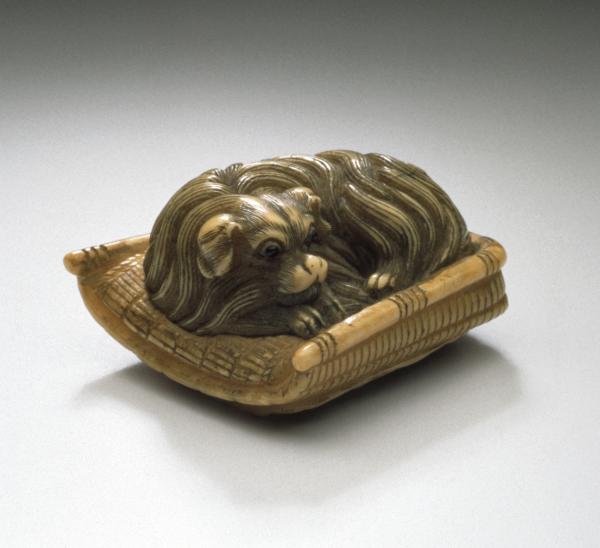Animals add light to our lives and love to our homes, none more so than our constant companions of the past few thousand years, dogs and cats. Artists have long taken inspiration from these helpful, confounding, complicated creatures. Two thousand years ago in Mexico, an artist fashioned the adorable pup below out of clay. Around the same time in Egypt, another artist sculpted a playful dog out of bronze. Notice how simple the shapes of the sculptures are, yet we can still tell what animal they are.
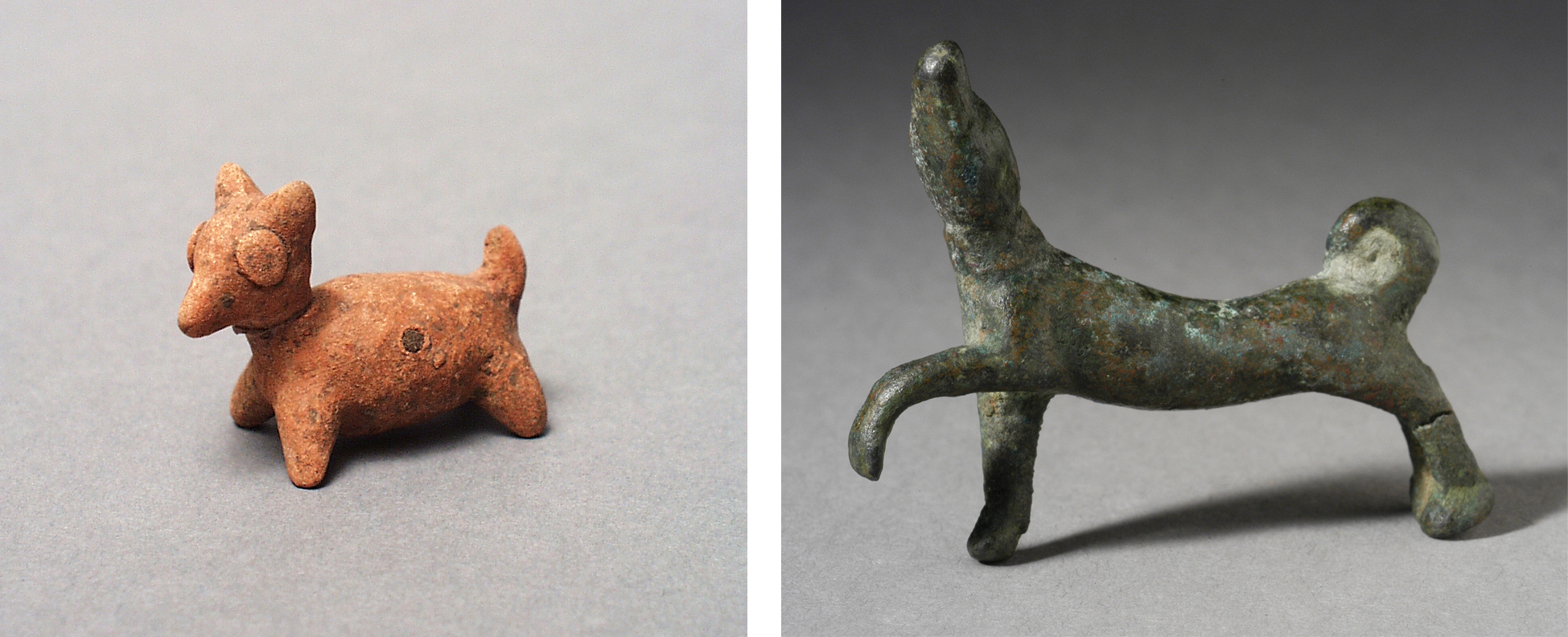
Meanwhile, cats were as regal in the ancient world as they still behave today. Pet? I am a goddess! Using gold paint and earrings, the artist made it clear that this was an important animal.
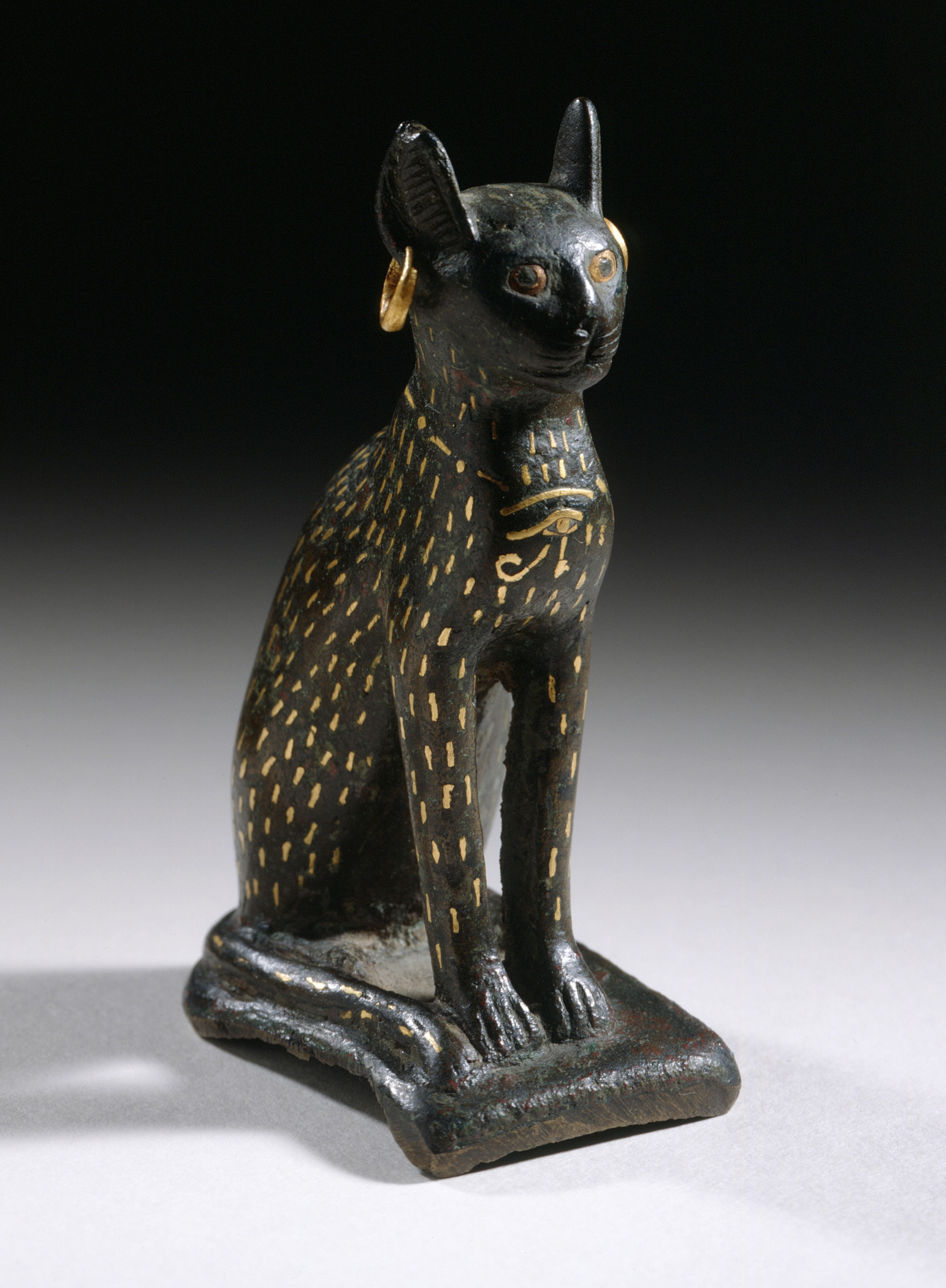
Companion, guardian, friend. A dog’s human in ancient China had the sculpture below buried with him so he did not have to go into the afterlife alone. Notice how the lines inscribed (that means “cut into the clay”) on the face give the dog an expression. What do you think the dog is feeling?
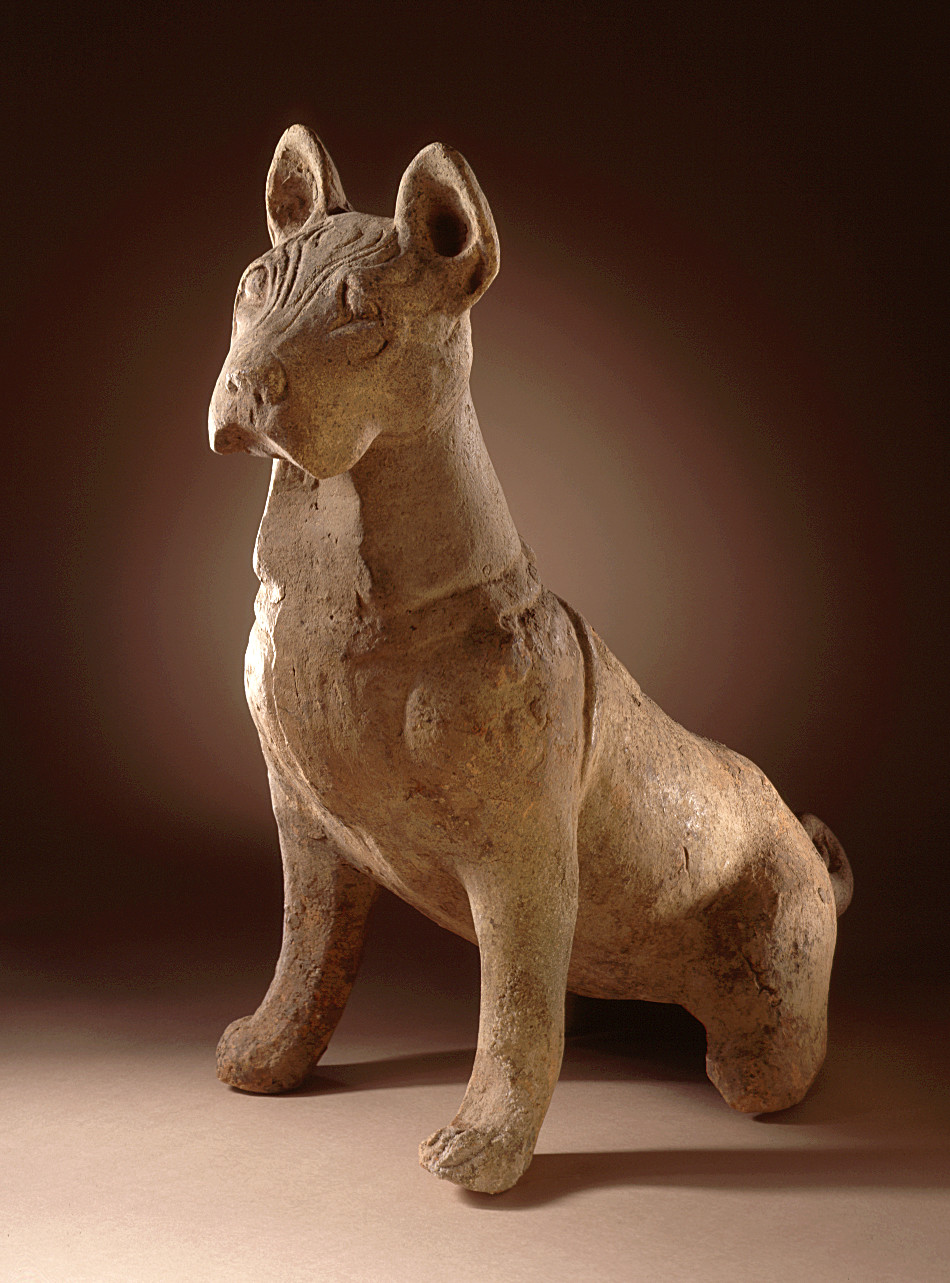
Independent and solitary, you often see cats out and about, following their own plans. It is a wonder cats and humans ever became so close. Yet a purring kitty curled beside you can be such a comfort. The two works from Japan, below, show both sides of cats' personalities.
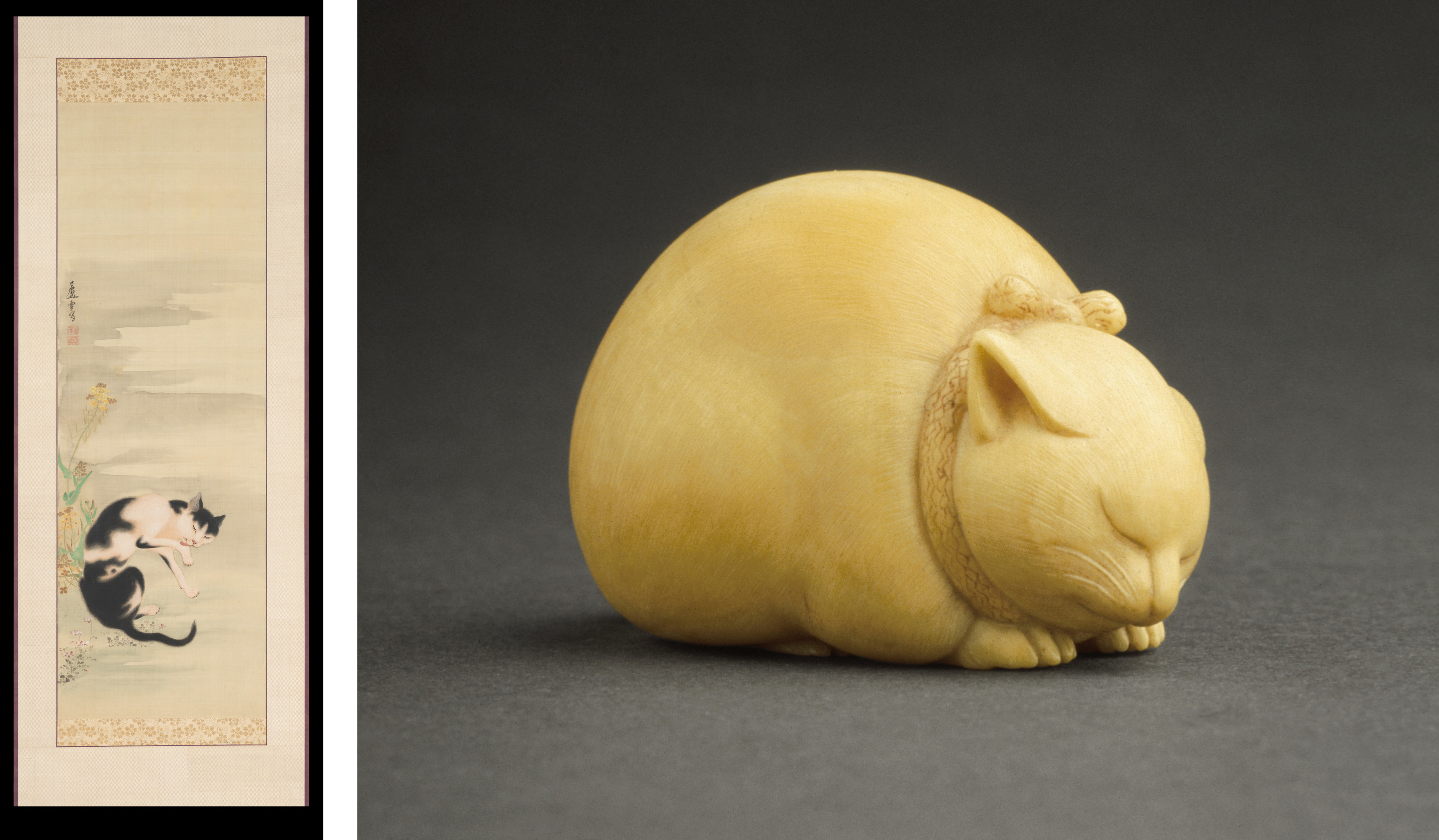
Does each of these works of art capture the unique personality of the animal? How? Can you name some ways you think each of them acted, and what in the picture makes you think that? Give each of the animals a name that matches their personality.
Have you ever tried to draw a dog or a cat? It may not be as hard as you think. When artists are learning to draw something, they make many different drawings of it, over and over again to try out ideas, and get them right. These drawings are called studies. Look closely at the studies below and use them as examples in your drawing. If you have a pet, make a pet portrait like the ones above, so your beloved animal will stay with you forever. If you don’t have a pet right now, draw the one you wish you had!
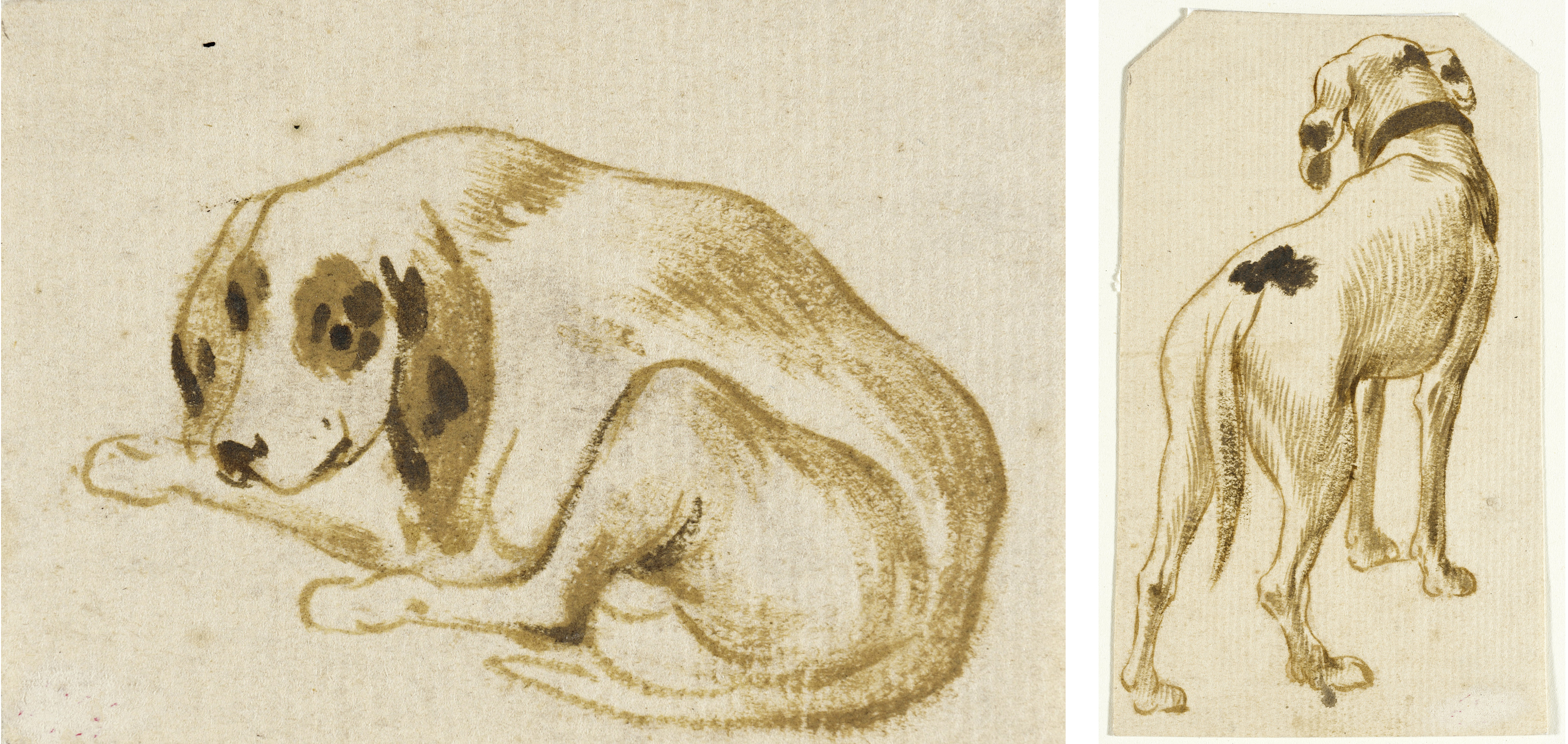
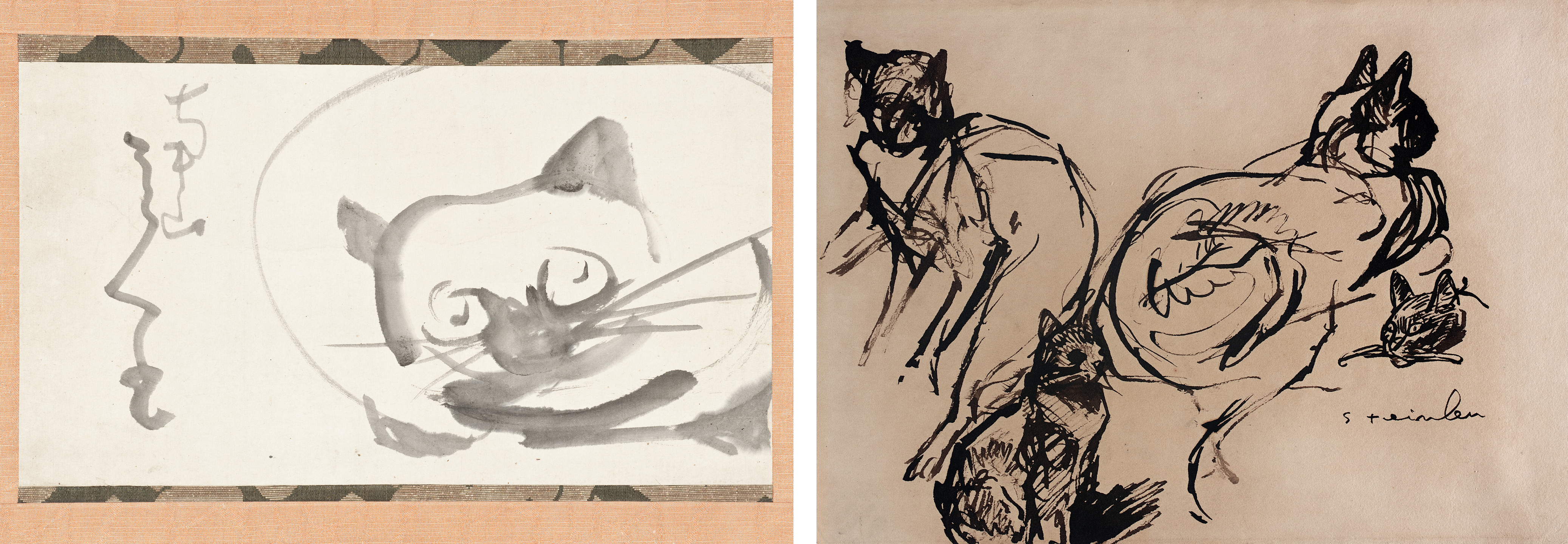
If you have a printer, print out this blog and add your pet names to the pictures and draw your pet portrait at the bottom. If you don't have a printer, use any paper you have. We’d love to see your creations! Have an adult post your drawings to social media and tag @LACMA.



